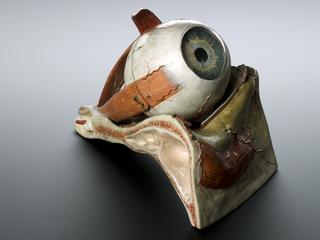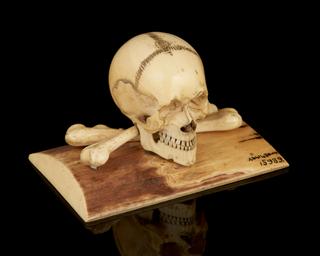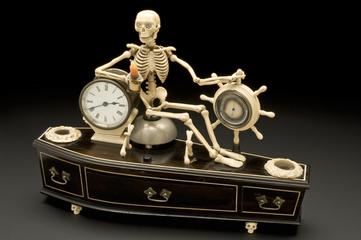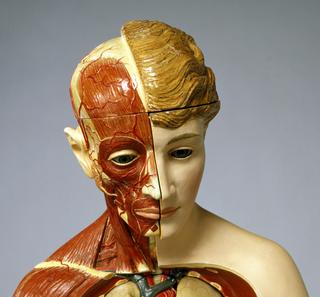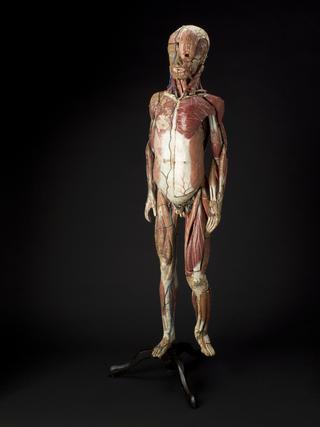
Human skin, tattooed with anchor, pierced heart, fish and inscription, probably French, 1850-1920
An anchor, pierced heart, fish and the inscription ‘VICTOR’ are tattooed onto human skin. The motifs were common among sailors, so the owner was most likely in the navy. The skin was once owned by Parisian surgeon Dr Villette. He worked in military hospitals and collected and preserved hundreds of samples from the bodies of dead French soldiers. It was eventually bought for Henry Wellcome’s medical collection by one of his collecting agents, Captain Johnston-Saint.
In the late 1800s, tattoos were often seen as markers of criminal tendencies or ‘primitiveness’. Medical men tried to interpret common images and symbols. Tattoos were also a tool for identification, a practice that continues today.
Details
- Category:
- Anatomy & Pathology
- Collection:
- Sir Henry Wellcome's Museum Collection
- Object Number:
- A585
- Materials:
- skin, human
- Measurements:
-
overall: 179 mm x 270 mm
- type:
- human remains and tattoo
- credit:
- Wellcome Trust

